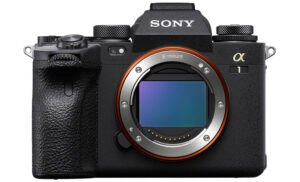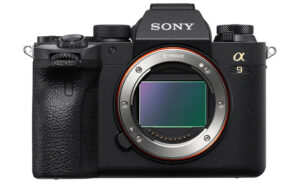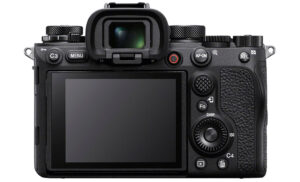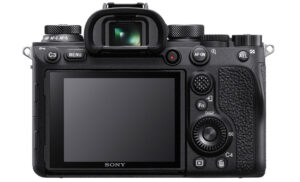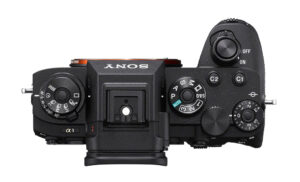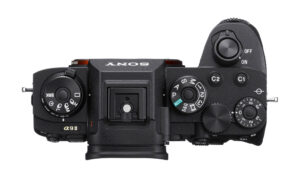The A9 series marked an important step in the evolution of mirrorless cameras. It took the performance of the electronic shutter to the next level, offering speed (20fps burst) and features (blackout-free EVF) never seen before.
In parallel, Sony broke new ground with high resolution cameras like the A7R III and the A7R IV before giving video-makers a long-awaited upgrade with the A7S III.
With the A1, the brand has taken the best specifications from the various products announced over the past few years and put them into a single chassis. So advanced is this new product that they decided to give it a different nomenclature, promoting the new camera to the status of flagship.
To understand what makes the A1 such an exciting product, we felt that there was no better camera to compare it against than the former flagship, the A9 II.
But first, a quick list of the things they have in common:
- design and ergonomics
- NP-FZ100 battery (CIPA rating is a bit lower on the A1)
- 5-axis stabilisation with 5.5Ev of compensation (CIPA)
Ethics statement: The following is based on our personal experience with the A9 II and official information from Sony. We were not asked to write anything about these products, nor were we provided with any sort of compensation. Within the article, there are affiliate links. If you buy something after clicking the link, we will receive a small commission. To know more about our ethics, you can visit our full disclosure page. Thank you!
1. Image quality
The main specification that sets the two cameras apart is the resolution: whereas the A9 features 24.2MP, the A1 has 50.1MP. Both sensors have a back-illuminated structure.
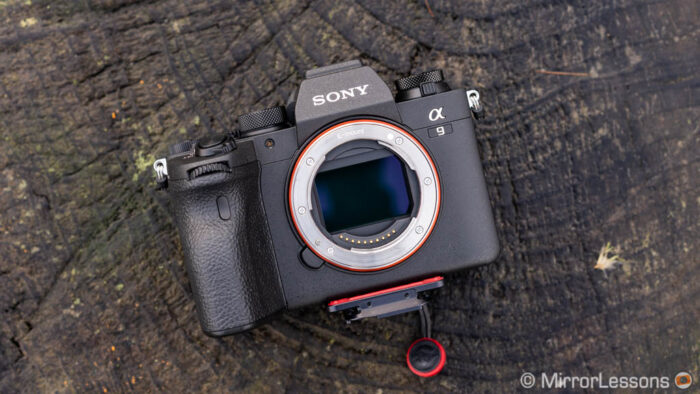
Consequentially, we find different ISO ranges:
- A1: 100-32,000 ISO, or 50 to 102,400 ISO with the extended values (max. 32,000 for video)
- A9 II: 100-51,200 ISO, or 50 to 204,800 ISO with the extended values (max. 102,400 for video)
The A1 features improved colour reproduction (same as the A7S III) and inherits the new series of colour profiles, the Creative Looks, that are designed for stills and video. The Creative Styles on the A9 II are meant for still photography only. The “Looks” also have more settings to customise the image.

The new camera has extra options when it comes to the recording format. With RAW, there is the lossless compressed setting in addition to compressed and uncompressed, a first in the Alpha series despite long being available from other brands (in other words: finally!).
For JPGs, there is a new “Light” compression to make the files smaller than the Standard compression.
There is the HEIF format (HDR) that saves 10-bit files instead of the 8-bit JPG. However keep in mind that at the time of writing, this format is not compatible with popular photo editing software programs.
Finally, the A1 can use its sensor shift technology (IBIS) for the Pixel Shift Multi Shooting mode that composites up to 16 full-resolution images and delivers an output of 199MP. Note that this mode requires a tripod, doesn’t work well with moving subjects and requires Sony’s Imaging Edge software to composite the files.
2. Electronic shutter
Both cameras are equipped with an Exmor RS sensor, which is a stacked sensor that includes an integral memory to process more data simultaneously, and is at the heart of the A9 and A1’s stunning speed and performance.
Additionally, the A1 features Sony’s new BionZ XR engine that is said to be 8x faster than the previous BionZ X found in the A9 II. The new processing engine is what makes it possible for the A1 to have improved continuous shooting speeds, autofocus and more, despite the increase in resolution.
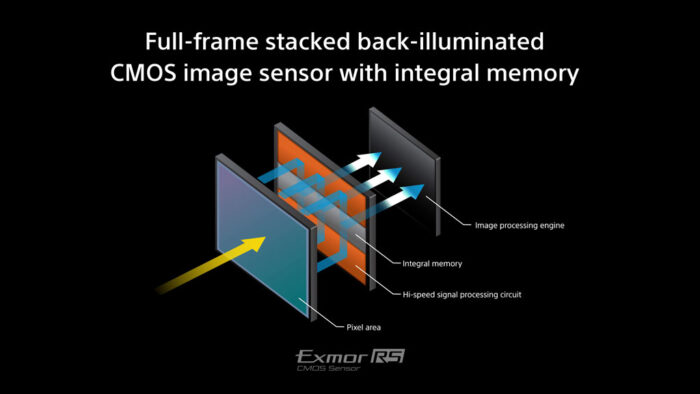
The technology described above sets the A9 and A1 series apart for another characteristic, the electronic shutter, which has never been so powerful and so close to replacing the traditional mechanical shutter for good.
The electronic shutter has helped manufacturers push the boundaries of the continuous shooting speed beyond the limitations of the traditional mechanical curtains. The A1 pushes the boundaries even further with a maximum of 30fps at full resolution (with Compressed RAW only, otherwise it’s 20fps max.). The A9 II does a maximum of 20fps .
What’s more, these speeds are available with live view and no blackouts, giving you a video feed of your scene that remains smooth and uninterrupted when you start taking pictures (in fact Sony lets you add a fake shutter sound so that you know that the camera is taking photos). This would simply not be possible with the mechanical curtains alone.
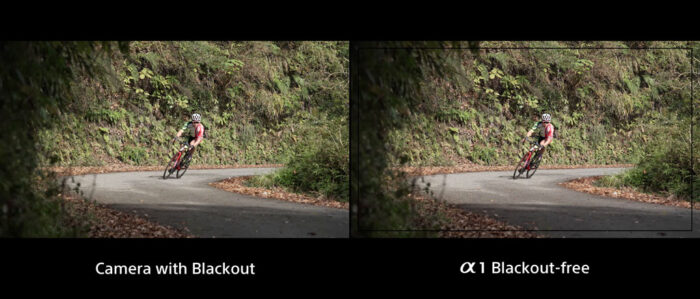
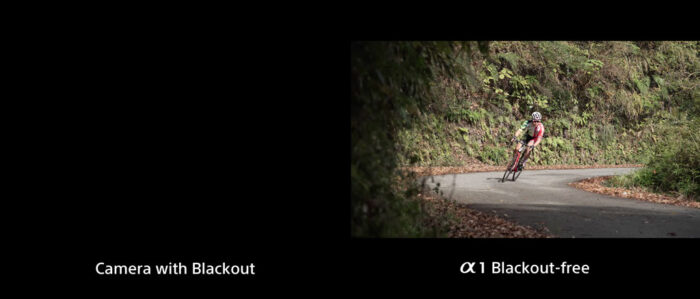
Initially, the advantage of the electronic shutter was linked to the possibility of taking a shot in complete silence, and increase the maximum shutter speed (the A1 and A9 II go up to 1/32,000s). However there were severe limitations such as banding under certain artificial lights, distortion when panning (rolling shutter effect) and limited or no possibility of using a flash. The A1 is now very close to eliminating all these limitations entirely.
Rolling shutter has been improved in the last few years by most camera brands, with the A9 series leading the way. The image below shows the difference between a conventional electronic shutter and Sony’s Anti-Distortion shutter technology. The A1 reduces the phenomenon further by 1.5 times in comparison to the A9 II when shooting still images.
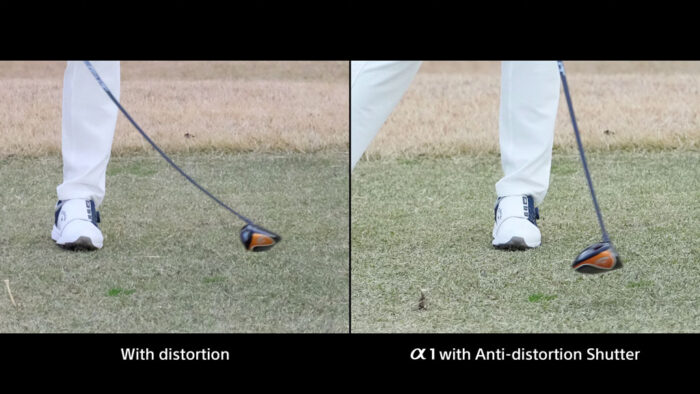
One of the biggest electronic shutter limitation lifted by the A1 is flash sync: the camera can go up to 1/200s, a first in the Alpha series and to my knowledge, the only mirrorless camera capable of syncing flash that fast. It can work at 1/200s even when shooting at 30fps, or when using the Pixel Shift Multi Shooting mode. Note however that the sync terminal is not compatible with the electronic shutter.
There is also a new setting that allows you to preview the scene with the flash effect (the camera lowers the refresh rate to increase live view brightness). This is useful when working in a studio to avoid having a live view too dark on the LCD or EVF.
Another important improvement is the possibility to use the Anti-Flicker mode with the electronic shutter (another world’s first), whereas traditionally this feature has always been limited to the use of the mechanical shutter.
The A1 has a Hi Frequency Flicker function that can adjust the shutter speed much more precisely than the usual 1/3 steps, allowing the camera to match the exact flicker frequency (the working range is 1/50s to 1/8064.5s). This makes the electronic shutter more usable when shooting under LED lights, or in sports venue that have LED signage in the background.
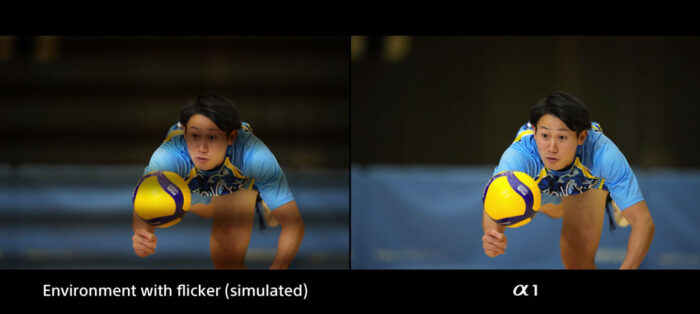
3. Mechanical shutter
While the electronic shutter is the real show-stopper, Sony has taken the time to give the mechanical shutter of the A1 interesting characteristics as well.
The curtains are made of carbon fibre to make the unit lighter. A new dual driven mechanism that combines the traditional spring with an electromagnetic drive actuator has been developed to improve durability. The new design produces less vibrations and has been tested for 500,000 cycles (same rating as the A9 II).
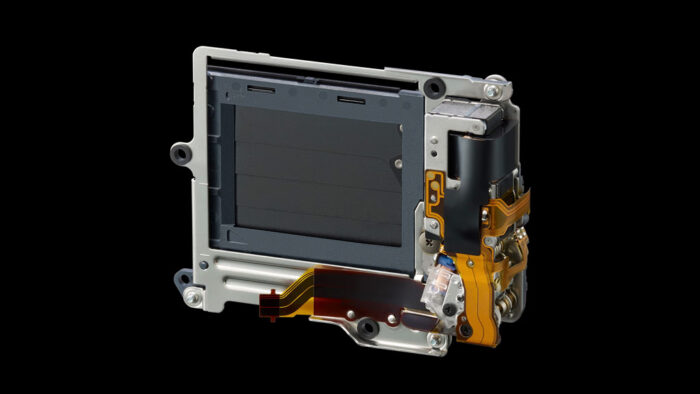
The A1 has the world’s first flash sync speed of 1/400s when using the M-shutter (1/500s in APS-C mode).
As for the continuous shooting speeds, both cameras reach 10fps with the mechanical shutter.
Another hidden feature is the possibility to close the curtains when the camera is powered off to protect the sensor when changing lenses. This idea is not new however: it was first seen on the Canon EOS R.
4. Autofocus
The A9 II has the best autofocus I’ve ever tested on a mirrorless camera (as confirmed in my birds in flight ranking). The camera performs AF/AE calculations up to 60 times per second and offers the best performance of any E-mount camera… until now!
The A1 challenges all of the above with a faster calculation speed of 120 times/s. It also has more phase detection points (759 vs 693).
In addition to all the usual AF settings, the A1 has an updated real-time tracking algorithm with better subject recognition. New settings allow you to move the tracking start point or switch between two subjects more easily.
The real time Eye AF is available on both cameras for humans and animals. It has been improved by 30% on the A1, and the latter can also track the eyes of animals better, even they are facing sideways or upside-down. The new camera can also track the eye of a bird (another first for the Alpha series). Note that Eye AF for animals and birds is not available when recording video.
Finally, the A1 has better low light performance with a minimum sensitivity of -4Ev (f2 aperture) and phase detection points can work at f22. The A9 II has a sensitivity of -3Ev (f2) and works up to f16.
5. Video: 8K vs 4K
The resolution of 50MP, as well as the faster processing power, allowed Sony to introduce another first for the E-mount series: 8K video recording. The A1 can do so up to 30fps with full pixel readout (from 8.6K oversampling) using the XAVC HS codec (HEVC/H.265). Internal recording is at 10-bit 4:2:0 and a maximum of 400Mbps.
Sony has designed a new heat dissipating structure on the A1 (Sigma Σ shaped graphite built into the stabilisation unit) to allow the camera to record 8K video at 30p for at least 30 minutes without overheating. Sony even hinted that a longer duration is possible. We’ll let the internet and passionate YouTubers be the judge of that!
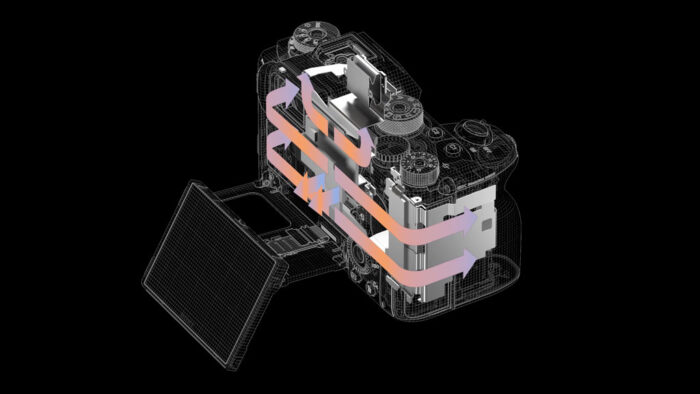
But 8K is not all.
In 4K, the A1 can record at 120p with a 10% crop on the sensor, albeit not with oversampling. If you want full pixel readout, you need to select the Super35/APS-C mode (oversampled from 5.6K) but it is limited to 60p.
What’s more, the A1 can record 4K in 10-bit 4:2:2 internally at all frame rates, for a maximum of 600Mbps when using the All-I compression.
It’s a shame that with all this power, the camera can’t do more than 120p in Full HD.
What about the A9 II then? Well, it can record 4K up to 30p and 100Mbps, with 8-bit internal recording. Full HD is capped at 120p too. Furthermore, it lacks the Picture Profiles, Sony’s advanced image settings for video, which means you don’t get curves such as HLG and S-Log.
Fortunately, the A1 has the Picture Profiles, which includes HLG, S-Log2, S-Log3, S-Cinetone and more.
The A1 can output 16-bit RAW video via the full-sized HDMI port, and you can record internally and externally at the same time. Not that the RAW output is limited to 4K.
Both cameras feature in-body image stabilisation, but the A1 also has the Active mode that crops the sensor a little but improves stability (electronic stabilisation, not available in 8K or 4K/120p). You can also leave the stabilisation off, while collecting the gyro sensor data to stabilise in post with Sony’s Catalyst software. Various tests online made with the A7S III and A7C, which also have this option, showed that it gives better results than in-camera stabilisation.
6. Viewfinder
The A1 features the most impressive viewfinder to date, with a 9.44 million dot 0.64-in OLED panel and a maximum refresh rate of 240Hz. It has a maximum magnification of 0.9x (41˚) but you can select a lower magnification if you wish (33˚). The eyepoint is 25mm.
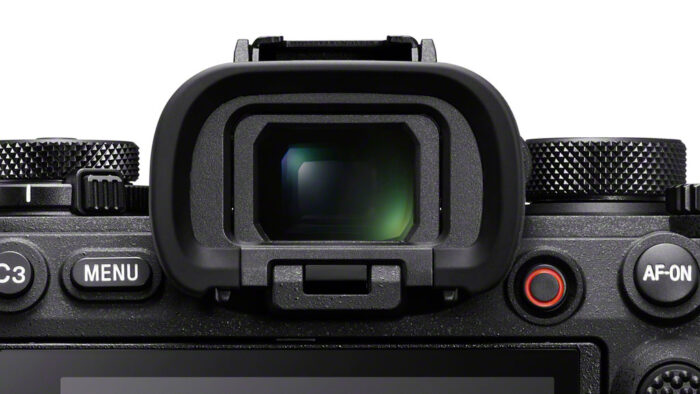
The A1 viewfinder has a new setting called Frame Rate Low Limit, which allows you to insert black frames to improve the display response when using a shutter speed of 1/60s or slower (useful for panning shots). This is valid when using the electronic shutter.
The A9 II has a respectable EVF but nothing compared to the new flagship. It is a 0.5-in OLED panel with 3.69M dots, 0.78x of magnification and 23mm eye point. The maximum refresh rate is 120Hz.
7. SD cards
Both cameras have two memory card slots.
The A9 II can take two SD UHS-II cards, whereas the A1 slots are compatible with UHS-II SD cards as well as the CFexpress type A cards that have a faster writing and reading speed.
The CFexpress cards help to clear the buffer more quickly. For example the A1 can work at the full speed of 30fps up to 155 compressed RAW or 165 JPG files, according to Sony’s internal tests made with a CFexpress card. By comparison, the A9 II can do 361 JPGs or 239 RAW with a SD UHS-II card. In this case the larger buffer is possible thanks to the lower resolution of the sensor.
CFexpress cards on the A1 are required when recording 4K at 120fps.
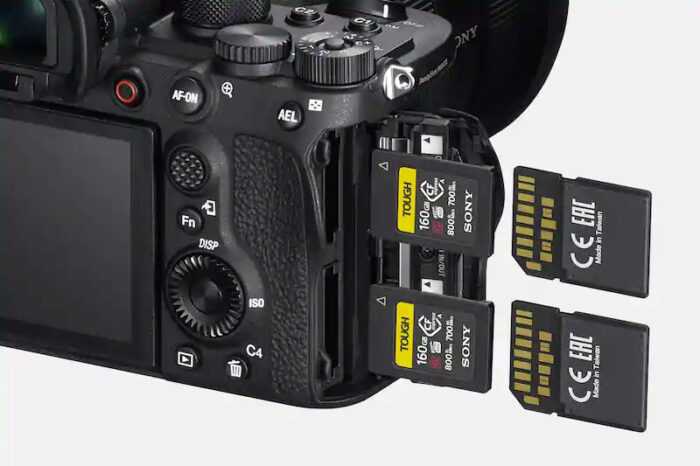
8. Menu system
The A1 features the latest version of Sony’s menu system, first introduced on the A7S III. It is a complete re-design with better organisation and more precise navigation. The menu also changes automatically when you switch from stills to video mode.
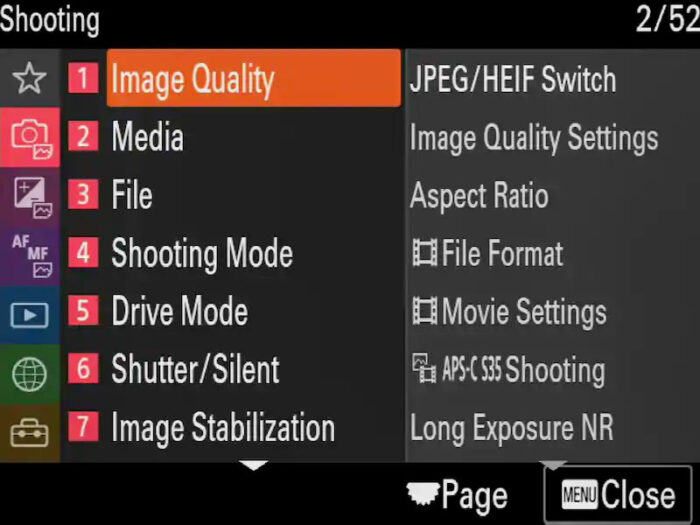
Furthermore, the menu on the A1 can be navigated with the touch screen.
9. Data transfer speed
Sony built the A9 series with professional sports photographers in mind and has included various options to transfer images quickly in the field.
There is a 1000BASE-T LAN connector, a 10Ghz USB C 3.2 and Wifi with 5Ghz. Concerning the latter, Sony claims a 3.5 times faster FTP transfer on the A1 thanks to the inclusion of 2×2 MIMO support (IEEE 802.11a/b/g/n/ac). The camera has dual antennas to ensure better communication under the camera’s magnesium alloy chassis. The speed when using wired LAN connection has also been improved by 1.2x.
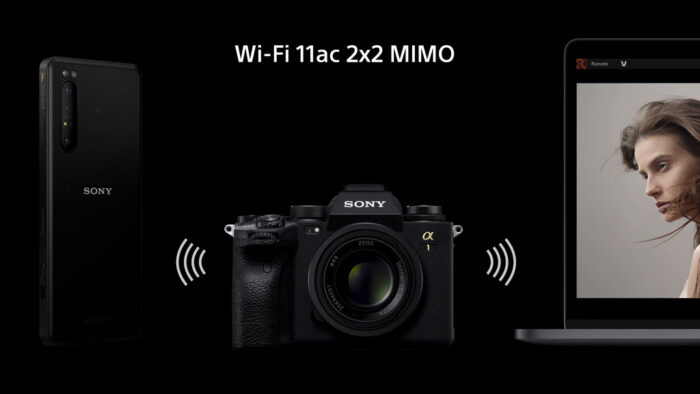
10. Price
The A1 is the most expensive Alpha camera to date, with a retail price starting from $6500, £6500 or €7300 for the body only.
The A9 II is not a cheap camera by any means but can be found for much less, with prices hovering around $4500, £4300 or €5000.
Prices as of late January 2021.
Conclusion
The saying “there is no such thing as the perfect camera” is rightfully valid for many reasons, not least because we all have different photographic interests and therefore different needs.
But if we try to imagine the perfect camera as being a product that can satisfy the most demanding photographers and video-graphers no matter the genre, then perhaps the A1 is the one that comes the closest to this definition.
Do you need high resolution? Check. Do you want the best AF there is? Check. Do you want some of the best video specifications seen on a mirrorless camera? Check. I’ll reserve judgement until I can try the camera myself, but I think we can all agree that there aren’t many other products like it at the moment.
The high price tag will put many people off of course and those who still don’t like Sony’s ergonomics might hesitate as well. The design seems more or less the same as the A9 II. The A1 is a bit heavier and deeper and the drive dial has a new design, but these things aside, there isn’t much else to say.
Personally, I’m curious to see if the A1 will have improved stabilisation for stills, something that has never been Sony’s forte in comparison to other brands. On paper, they have the same rating of 5.5 stops of compensation so I’m not expecting much, except the extra settings for video that I explained above.
Out of curiosity, I’m waiting for the first overheating tests to see if it will suffer the same fate as the Canon EOS R5 (but at this point, I’d be surprised if Sony didn’t handle this topic carefully to avoid the same gaffe).
To conclude, I’m also wondering what the future of the A9 series will be. Will we see an A9 III sometime in the next few years, or will the A1 take over from now? Let me know your thoughts in the comments below!
Reminder: the links below are affiliate links. If you decided to buy something after clicking the link, we will receive a small commission.
Check price of the Sony A1 on
B&H Photo

